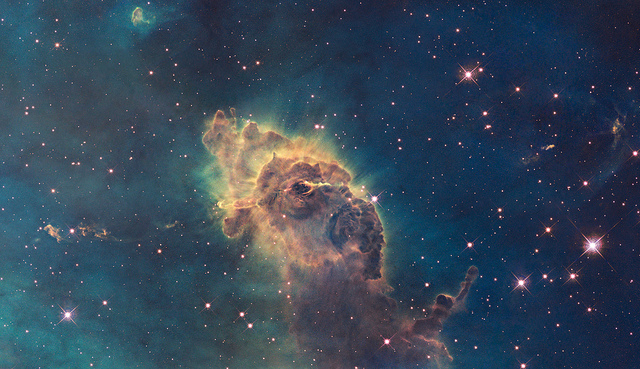A fossilised remnant of the early Milky Way harbouring stars of hugely different ages 19,000 light-years from Earth has been unveiled by an international team of astronomers using Hubble space telescope.
This stellar system resembles a globular cluster, but is like no other cluster known, researchers said. It contains stars remarkably similar to the most ancient stars in the Milky Way and bridges the gap in understanding between our galaxy’s past and its present.
Terzan 5 has been classified as a globular cluster for the forty-odd years since its detection.
n Italian-led team of astronomers scoured data from the Advanced Camera for Surveys and the Wide Field Camera 3 on
board The Hubble Space Telescope, as well as from a suite of other ground-based telescopes.
They found compelling evidence that there are two distinct kinds of stars in Terzan 5 which not only differ in the elements they contain, but have an age-gap of roughly 7 billion years.
The ages of the two populations indicate that the star formation process in Terzan 5 was not continuous, but was dominated by two distinct bursts of star formation.
“This requires the Terzan 5 ancestor to have large amounts of gas for a second generation of stars and to be quite massive. At least 100 million times the mass of the Sun,” said Davide Massari, co-author of the study, from INAF in Italy, and the University of Groningen in the Netherlands.
Its unusual properties make Terzan 5 the ideal candidate for a living fossil from the early days of the Milky Way. Current theories on galaxy formation assume that vast clumps of gas and stars interacted to form the primordial bulge of the Milky Way, merging and dissolving in the process.
“We think that some remnants of these gaseous clumps could remain relatively undisrupted and keep existing embedded
within the galaxy,” said Francesco Ferraro from the University of Bologna in Italy, and lead author of the study.
“Such galactic fossils allow astronomers to reconstruct an important piece of the history of our Milky Way,” said Ferraro.
While the properties of Terzan 5 are uncommon for a globular cluster, they are very similar to the stellar population which can be found in the galactic bulge, the tightly packed central region of the Milky Way.
From Agencies, Feature image courtesy nasa


























